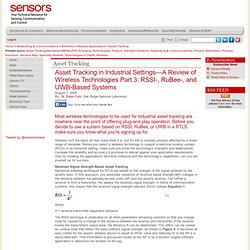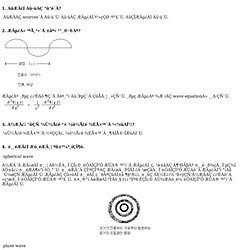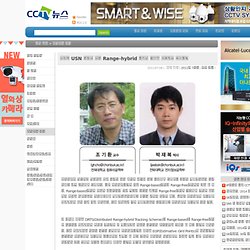

RFDH - 대한민국을 RF강국으로! Wi-Fi Location-Based Services 4.1 Design Guide - Location Tracking Approaches [Design Zone for Mobility. Table Of Contents Location Tracking Approaches Cell of Origin Distance-Based (Lateration) Techniques Time of Arrival Time Difference of Arrival (TDoA) Received Signal Strength (RSS) Angle-Based (Angulation) Techniques Angle of Arrival (AoA) Location Patterning (Pattern Recognition) Techniques Calibration Phase Operational Phase Location Tracking Approaches Location tracking and positioning systems can be classified by the measurement techniques they employ to determine mobile device location (localization).

These approaches differ in terms of the specific technique used to sense and measure the position of the mobile device in the target environment under observation. A fourth receiving sensor and third hyperbola may be added as an enhancement to perform TDoA hyperbolic multi-lateration. This may be required to solve for cases where there may be more than one solution when using TDoA hyperbolic tri-lateration. Asset Tracking in Industrial Settings—A Review of Wireless Technologies Part 3: RSSI-, RuBee-, and UWB-Based Systems. August 1, 2008By: Dr.

Peter Fuhr, Oak Ridge National LaboratorySensors Most wireless technologies to be used for industrial asset tracking are nowhere near the point of offering plug-and-play operation. Before you decide to use a system based on RSSI, RuBee, or UWB in a RTLS, make sure you know what you're signing up for. Wireless isn't the black art that many think it is, but it's still a complex process affected by a broad range of variables. Before you select a wireless technology to support a real-time location system (RTLS) in an industrial setting, make sure you know the technology's strengths and weaknesses.
Received Signal Strength-Based Asset TrackingNumerous enabling techniques for RTLS are based on the strength of the signal received by the asset's radio. Where: The RSSI technique is predicated on all other parameters remaining constant so that any change must be caused by a change in the distance between the receiver and transmitter. RuBee tags use low-cost static RAM. 안테나의 과학. 1.

ÀüÆÄ¿Í Àü·ùÀÇ °ü°è´Â? ÀüÆÄÀÇ sources´Â Àü·ù´Ù. Àü·ùÀÇ Æĵ¿ÀÌ º¹»çÇØ ³ª°£´Ù. ÀüÇÏÆĵ¿ÀÌ Àü·ù´Ù. 2. Æĵ¿Àº ¸ðµç ¿¡³ÊÁö ¶Ç´Â Á¤º¸°¡ Àü´ÞµÇ´Â ÇüŸ¦ ¸»ÇÑ´Ù. 3. ¼Û½Å¿ë ¾ÈÅ׳ª´Â ½ºÇÇÄ¿, ¼ö½Å¿ë ¾ÈÅ׳ª´Â ¸¶ÀÌÅ©·ÎÆùÀÌ´Ù. 4. À½ÆÄ´Â ÆÄ¿øÀÎ ±¸¸¦ Áß½ÉÀ¸·Î ÇÏ¿© ±ÕÀÏÇÏ°Ô ÆÛÁ® ³ª°¡´Â Æĵ¿À̸ç, °ø±âÀÇ Á¶¹ÐÃþÀº ±¸¸é ¸ð¾çÀ¸·Î µÇ¾î Àֱ⿡ ±¸¸éÆĶó°í ºÒ¸°´Ù. Plane wave ÆÄ¿øÀÌ ¹«ÇÑÈ÷ ¸Õ °÷¿¡ ÀÖÀ» ¶§¿¡ »ý±â´Â Æĵ¿Àε¥, Á¶¹ÐÃþÀÌ ÆòÇàÀÎ Æò¸éÀ¸·Î µÇ´Â °æ¿ìÀÇ Æĵ¿À» Æò¸éÆĶó°í ÇÑ´Ù. 5. Untitled Document. 저밀도 USN 환경을 위한 Range-hybrid 기반의 향상된 이동객체 추적기법. 위치측정은 사용자나 사물에게 주변 환경에 대한 인식을 가능케 하는 기본적인 요소이기 때문에 센서네트워크 환경에서는 가장 핵심적인 요소이다.

기존 위치측정기법은 크게 Range-based방식과 Range-free방식으로 나눌 수 있다. Range-based방식은 전파의 불규칙하고 추가 장비가 필요한 반면에 Range-free방식은 능동적인 통신을 수단으로 위치를 측정하므로 자원제약적인 센서네트워크에서는 적합한 것으로 알려져 있다. 그러나 위치측정의 정확성이 주변노드의 수에 따라 크게 좌우된다. 특히 밀집도가 낮은 센서네트워크 환경에서는 위치측정의 정확성이 매우 낮다. 본 고에서 제안된 DRTS(Distributed Range-hybrid Tracking Scheme)는 Range-based와 Range-free방식을 혼합하고 주변노드의 위치와 통신범위 및 세기정보를 최대한 활용하여 이동물체를 추적할 수 있는 기법을 제시한다. USN(Ubiquitous Sensor Network) 환경은 언제, 어디서나 정보를 이용할 수 있게 한다. 위치정보는 사용자나 사물에게 주변 환경에 대한 인식을 가능하게 하는 기본적인 요소이기 때문에 유비쿼터스 컴퓨팅에 가장 핵심적인 요소이다. 센서네트워크는 비행기의 배치전략 혹은 자원 제약적인 배치전략으로 센서노드의 밀집도가 낮은 환경이 일반적이다. 센서네트워크 환경에서 이동객체의 위치계산은 Range-based와 Range-free방식으로 나눌 수 있다. 본 고는 저밀도 센서네트워크 환경에서 추가 장비가 요구되지 않은 RSSI와 주변노드들을 효율적으로 활용하여 위치추적의 정확성을 획기적으로 개선할 수 있는 DRTS(Distributed Range-hybrid Tracking Sche-me)를 제안한다. 관련연구 위치측정 및 계산기존 위치측정기법들은 고정 노드들로부터의 거리나 각도의 측정값을 기반으로 삼각측정법을 이용하여 물체의 위치를 계산한다. 위 식을 이용해 간단히 이동물체의 좌표 (X, Y)를 아래식과 같이 계산할 수 있다. 그림 1.